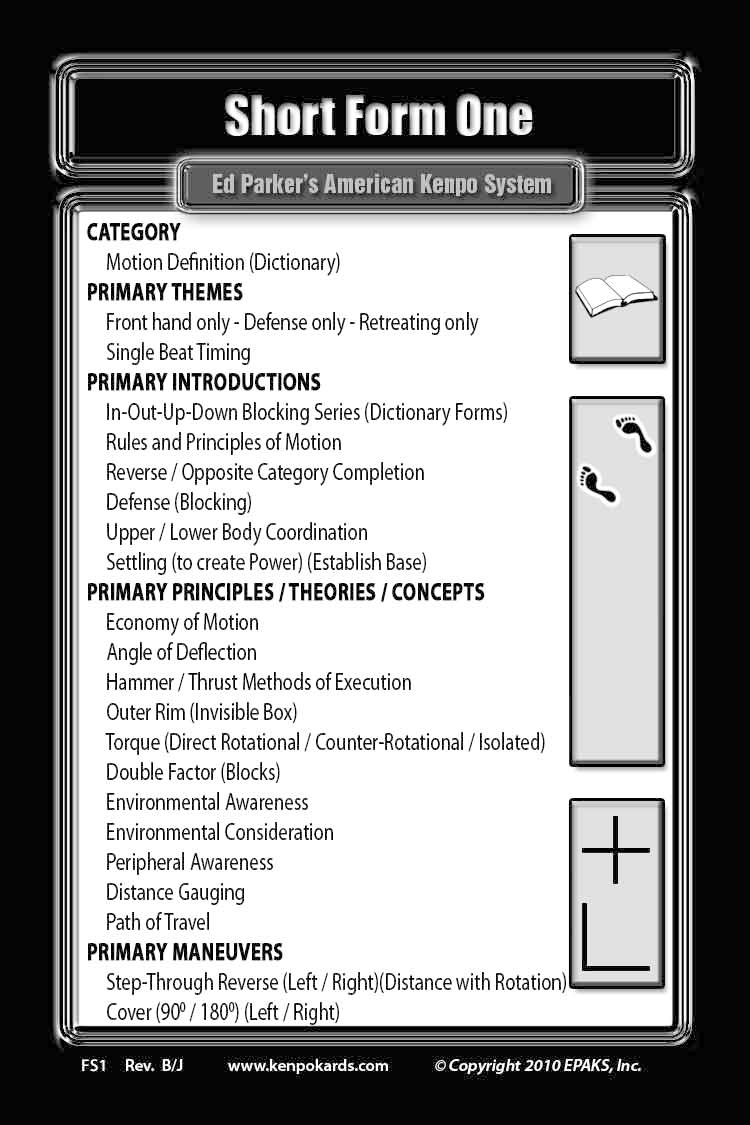
The back of the Kard can quickly be described as a microcosm of this guidebook. If you have read the book up to this point, the information presented on the Kard should be very easy to understand without much further explanation. What follows is a breakdown of the design and intent of the Kard.
The back of the Kard is divided into two columns. The left column is a textual summary of the major information presented in Short Form One. The right column is a quick overview of other attributes about Short Form One that are best or more quickly illustrated through images.
The Left Column
The left column lays out a quick overview of the major information presented in Short Form One. It should be noted that due to space limitations, not all information about Short Form One can be presented. So, a wide variety of the most important information has been included.
The left column is broken down into different 'categories of information.' This design is intended to help the practitioner in absorbing and comprehending the information in a more concentrated and targeted manner. In this way, the practitioner can be presented with related information that is presented in a concise manner, thereby enabling the practitioner to quickly overview a lot of information in a short period of time.
As stated earlier, the information illustrated on the back of the Kard is also presented in this guidebook - but in a more descriptive manner. It is suggested that the reader use this guidebook to help further research the information with which the reader is unfamiliar or needs more clarification and/or details.
The Right Column
The right column has three (3) rows.
| 1) | The top row illustrates what category of form Short Form One falls into - in this case Dictionary (see Dictionary / Encyclopedia / Appendix analogy earlier in this book). |
| 2) | The middle row illustrates the theme stance of the form - in this case the Neutral Bow. |
| 3) | The bottom row lays out the important patterns of Short Form One - in this case the directional and foot patterns. |